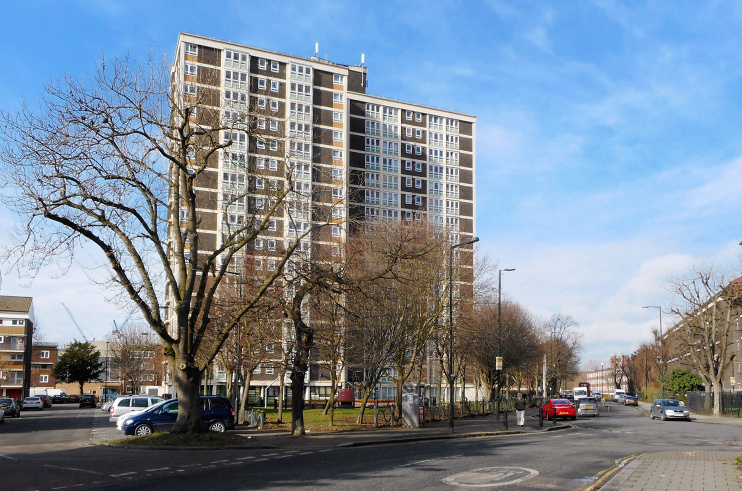Northumberland Park
Northumberland Park, Haringey
A multicultural, deprived satellite of Tottenham, situated in the north-east corner of the borough

Marsh Lane (now Northumberland Park) station opened on the Northern and Eastern Railway in 1842, bringing development opportunities to the area’s farms and market gardens.
A curving avenue was laid out in the late 1850s between Tottenham High Road and the station, on land behind the site of the Black House, a medieval mansion that had been owned by the dukes of Northumberland. The avenue was accordingly named Northumberland Park and was built up with villas for the upper middle classes.
In an early municipal utilities scheme, the Tottenham board of health sank a 450-foot well near the station at the beginning of the 1890s. Shown in the photograph below,* the disused pump house survives to the present day as a locally listed building. It recently served as Mount Zion Restoration Ministries’ London Miracle Centre until its miraculous sale in 2015 for around £3.75 million (with outbuildings and almost an acre of land).

Tottenham Hotspur FC played at Asplins Farm, beside the railway line in Northumberland Park, before moving a short distance to the club’s present home at White Hart Lane in 1899.
From the start of the 20th century factories were established in place of the surviving nursery gardens north of the station and the area remained an important industrial zone until after the Second World War. Over a 15-year period from the late 1950s a medieval farmhouse, disused industrial sites and most of Northumberland Park’s villas were replaced by Tottenham council’s expansive Northumberland estate of slab blocks and dull terraces.
On the opening of the Victoria line in 1968 an extensive depot was built beside the main-line railway tracks, but plans to run a Victoria line shuttle service to the station were later shelved.
Northumberland Park school opened in 1972 in the former Tottenham county school’s buildings and soon afterwards moved to purpose-built premises on Trulock Road. The school is now Duke’s Aldridge academy.
Employment levels in the locality are low and most residents rent their homes from the council or a housing association. The community’s largest ethnic group is of black African birth or descent, followed by white British, black Caribbean, Turkish, mixed ethnicity, Polish and Kurdish, in that order. Northumberland Park has been the beneficiary of numerous co-ordinated projects aimed at improving residents’ health and welfare, including more than 30 employment and training projects.
According to BBC research, Northumberland Park’s 85 per cent ‘Remain’ vote was the highest in London in the 2016 EU referendum, and the third highest in England (of wards with available data).
The secularist politician Charles Bradlaugh lived in Northumberland Park in the 1860s.
Walter Tull, the footballer who became the first black officer in the British Army during the First World War, lived at 77 Northumberland Park while he was playing for Tottenham Hotspur. A commemorative plaque was unveiled at the site of his former home in 2014.
Postal district: N17
Population: 14,429 (2011 census)
Station: Greater Anglia (zone 3)
